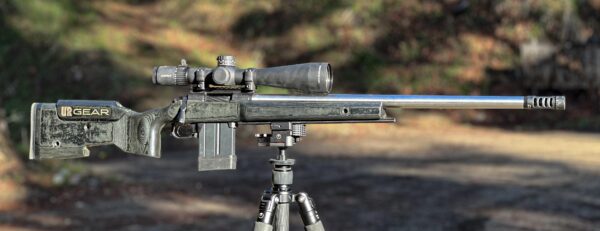DO NOT TRY THIS AT HOME. I’ve joined forces with BAT Machine and Alpha Munitions to truly test how hard we can push a .308 Winchester.
Disclaimer
Ultimate Reloader LLC / Making with Metal Disclaimer: (by reading this article and/or watching video content you accept these terms). The content on this website (including videos, articles, ammunition reloading data, technical articles, gunsmithing and other information) is for demonstration purposes only. Do not attempt any of the processes or procedures shown or described on this website. All gunsmithing procedures should be carried out by a qualified and licensed gunsmith at their own risk. Do not attempt to repair or modify any firearms based on information on this website. Ultimate Reloader, LLC and Making With Metal can not be held liable for property or personal damage due to viewers/readers of this website performing activities, procedures, techniques, or practices described in whole or part on this website. By accepting these terms, you agree that you alone are solely responsible for your own safety and property as it pertains to activities, procedures, techniques, or practices described in whole or part on this website.
About the Experiment
The goal was to push the .308 Winchester to pressures and velocities far above what the cartridge was designed for and shoot close to a mile.

This started with a strong BAT action, thick barrel, and extremely strong Alpha Munitions cases.
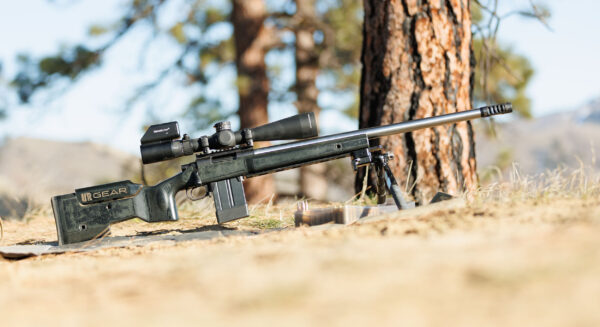
The rifle was carefully put together by Gavin Gear with the following components and parts:
- Bat Igniter action
- Ballistic Advantage 30 caliber barrel blank, 24″ finished length, 1:9 twist
- Cortina Precision EC Tuner Brake
- Foundation Centurion stock
- Hawkins Precision M5 DBM bottom metal
- Leupold Mark 5HD 5-25×56 Scope
This project took considerable planning. Bruce Thom of BAT Machine joined me at the Ultimate Reloader ranch and we set about developing a starting load, consulting both a Hornady reloading manual and QuickLOAD ballistics software.
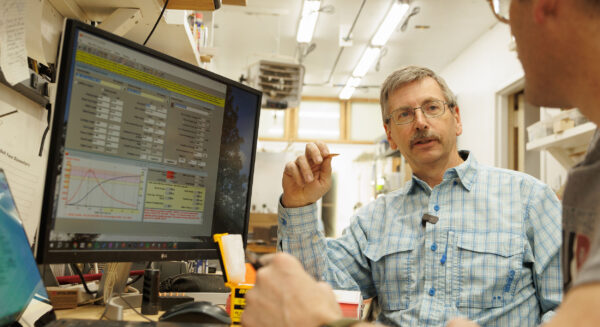
We decided to start safe, at 39 grains of Varget with a Berger .30 caliber 215 grain Hybrid Target bullet, but didn’t want to waste too much time with low pressure loads. To match .300 Win Mag, we eventually needed to hit 2,800 fps.
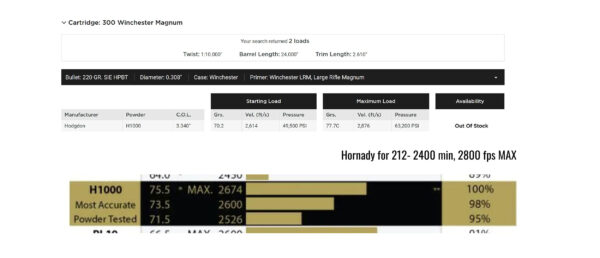
Bruce and I worked together — I began charging prepped cases while he made our dummy round on the Area 419 Zero press.
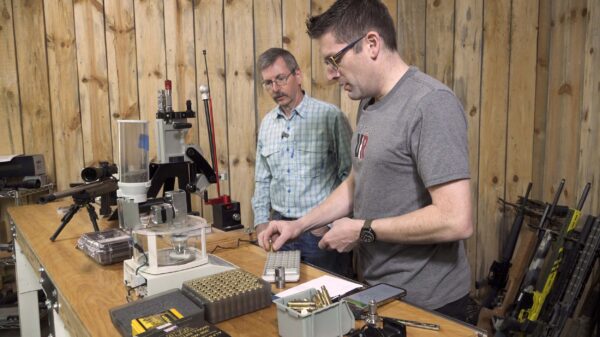
We used unfired.308 Winchester small rifle primer brass with more brass around the primer pocket. After he seated three bullets over our starting load of 39.0 grains, we headed out to the range.
Results
**We fired small sample sizes during our data collection and paid little mind to accuracy as our goal was pressure.**
We observed no pressure signs with 39.0 grains.
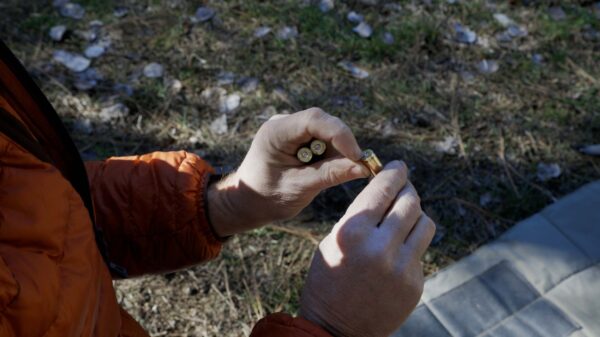
Average velocity was 2313.9 fps with a 6.5 fps SD.
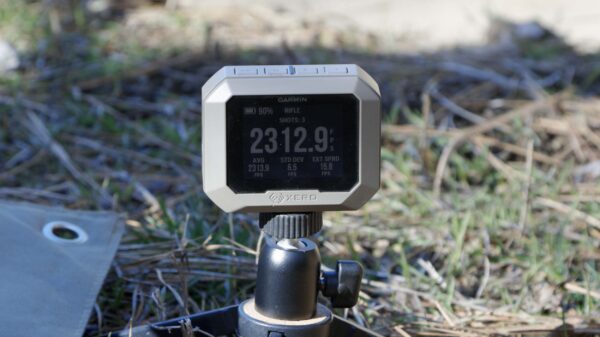
We headed back inside and went back to loading, this time increasing the powder charge by 1.0 grains.
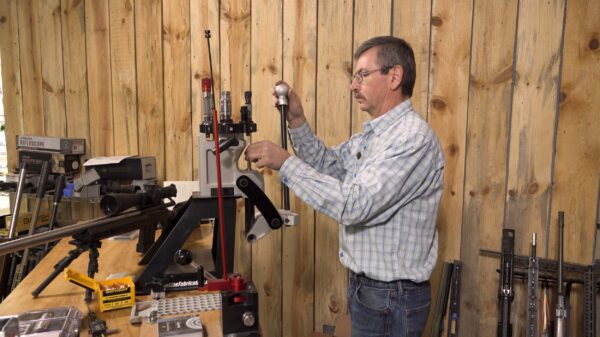
Once we’d loaded three rounds, we’d head back out to the range, shoot, check for pressure signs and record velocity. We did this from 39.0 grains up to 47.0 grains of Varget.
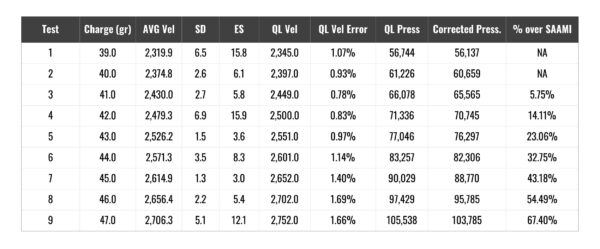
Our observed velocities were slightly lower than the QuickLOAD estimates for each charge weight, so we calculated the % error and applied it to pressure. (We didn’t have pressure transducers, so all pressure numbers are estimates.)
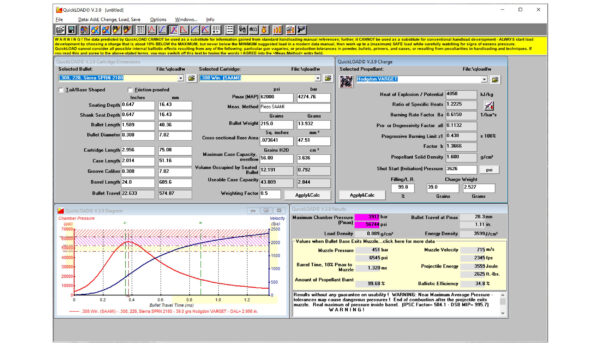
The supposed pressure limit for .308 Winchester is 62,000 psi. Bruce and I were both impressed by the 2.6 fps SD and 6.1 fps extreme spread for the 40.0 grain load — both far lower than we had anticipated. (We did have extremely small sample sizes as our goal was to observe pressure.) 41.0 grains showed similar SD and ES numbers but with an estimated pressure of 65,565 psi. It only took a single grain to go from under to over pressure!
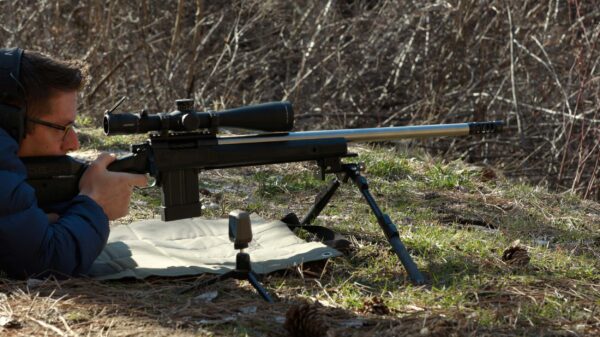
We continued on, observing our first pressure signs at 43.0 grains. The SD and ES were even lower than the previous loads, but we did see subtle rings around the primers. More primer extrusion occurred at 44.0 grains with an estimated 82,306 psi. By this point, most brass would have been losing primer pockets — no brass damage with the Alpha Munitions brass!
Our best SD and ES results of the entire experiment came at 45.0 grains, as did our first very concerning primer signs. We had severe cratering and were at great risk of blowing a primer.
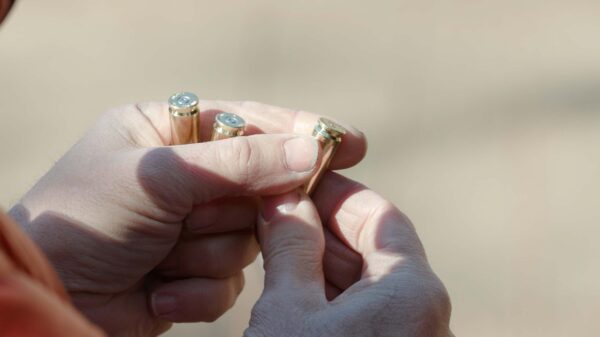
At this point we changed primers from Federal 205’s to a harder CCI No. 400 and repeated the 45.0 grain test. Velocities were within 2-3 fps with similar SD and ES figures, so it didn’t make a big difference there, BUT there was no primer extrusion. The CCI 400’s were flatter, but with almost no ring.
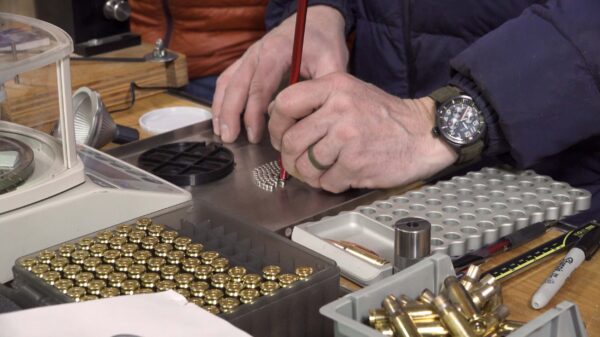
Continuing on with CCI 400 primers, we had estimated pressure of 95,785 psi at 46.0 grains. The Alpha Munitions brass held. Any other brass would have most certainly ruptured by this point, destroying the action in the process and potentially injuring the shooter. We had no issues with case extraction, but I could feel the slightest ejector swipe as I pulled back the bolt.
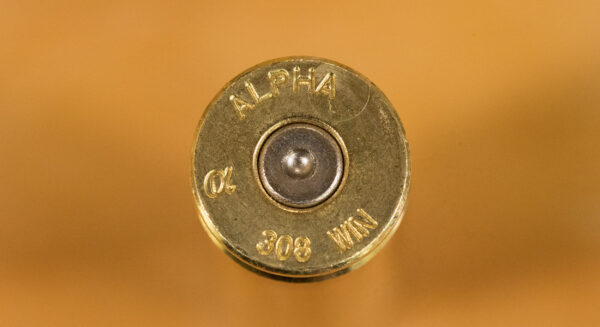
This was visible on the cases as well as some primer cratering. 47.0 grains pushed us over 2,700 fps, putting us near the maximum velocity for .300 Win Mag loads with a 215 grain bullet. We stopped here, as this isn’t sustainable .
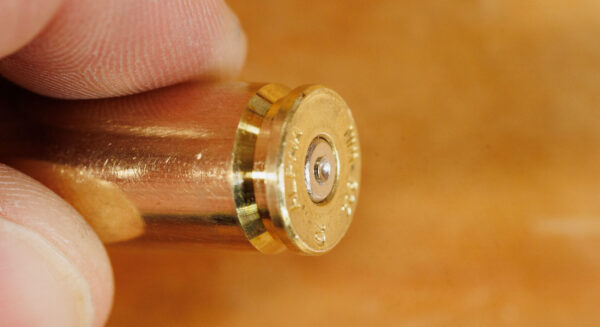
About the Brass
This experiment wouldn’t have been possible with any other brass. Alpha Munitions OCD technology works.
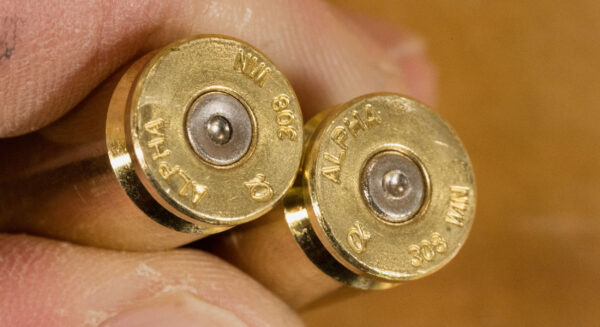
Alpha Munitions offers their American-made OCD — Optimized Case Design — brass in a number of cartridges. This brass is centered around three fundamentals: consistency, strength, and stability, and is built to last. Alpha Munitions says “OCD brass is the strongest, most durable rifle brass ever produced” and “plastically deforms less than competitors at identical loads” in testing. These quality cases come by the 100-count in plastic cases ideal for protection and storage of loaded ammunition.
From Alpha Munitions:
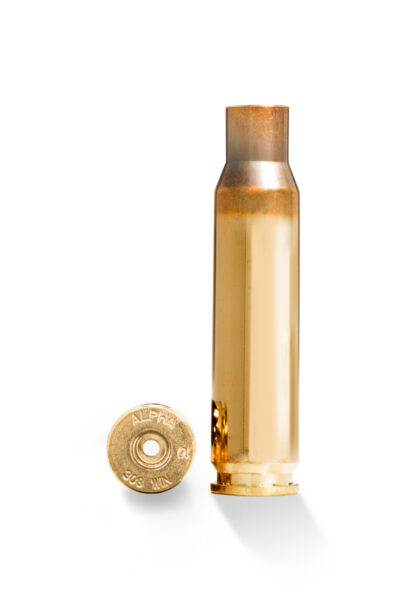
– Optimized Case Design with Optimized Case Head Technology
– 100 count boxes ship in custom Alpha Munitions plastic cases with perforated bi-layer foam for protection of cases and loaded ammunition
– 500 count orders ship in custom cardboard boxes with dividers.
While the specific metallurgy and manufacturing process of OCD brass are trade secrets, Alpha Munitions doesn’t hide how they check their brass. Each case is inspected on a custom machine with state of the art sensors for consistency. This process includes 10,000 images of the neck and shoulder; 3D mapping of every part (accurate within 0.2 microns); 10 key dimensions checked (accurate to +/-2 microns); and the flash-hole, head-stamp and primer pocket checked with a 21 megapixel camera. This isn’t a common practice – most brass is checked only for major defects.
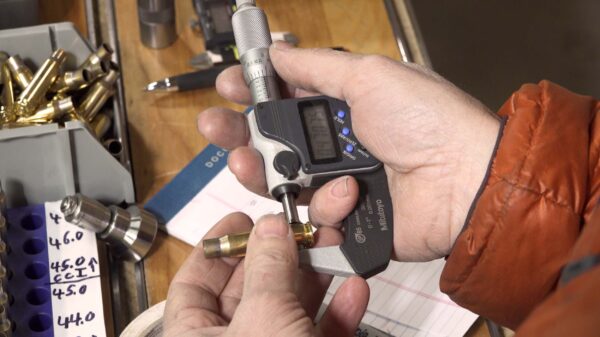
After the test we measured the solid portion of the brass web. We didn’t see dangerous levels of case head expansion until we hit 45.0 grains and above. No cases stuck at any level and all appeared reusable, though the 46.0 and 47.0 grain loads likely don’t have as many firings left in them.
Shooting
Bruce admitted he would have personally quit at the 44.0 grain load —considering it sustainable with good brass life.
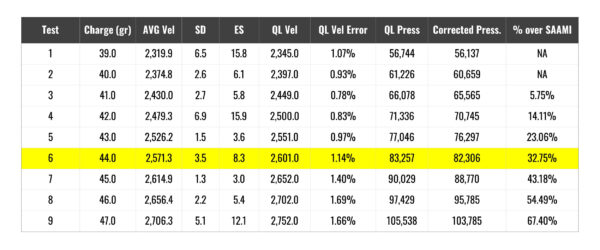
We loaded up a number of these rounds and headed to the ridgeline. Bruce started with some small D-M Targets’ rock chucks at 300 yards, engaging them with ease.
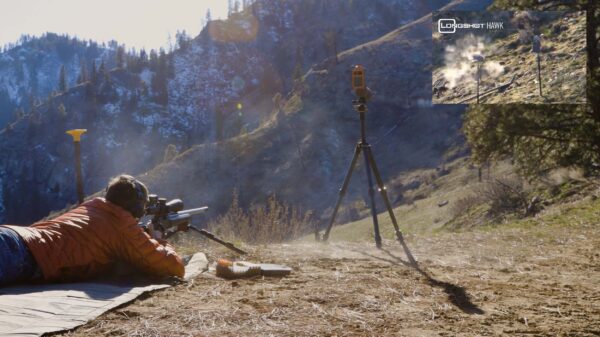
We moved to the 660-yard steel target.
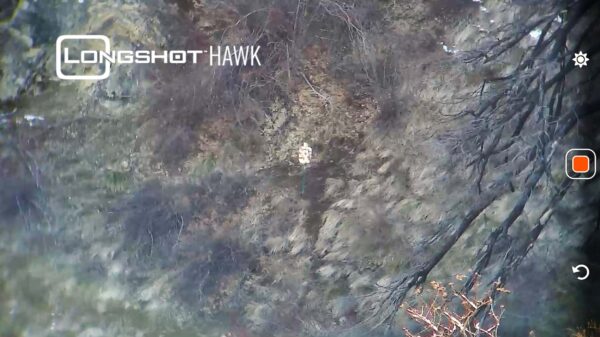
Bruce hit the first shot but had some trouble afterwards. Holding center with no wind, I was able to get consistent hits.

As a final test, we moved to Harold the Rock Chuck at 1,390 yards. To my great surprise, the green lights of Caldwell Flash Bangs indicated a first round impact!

Conclusion
We concluded 2,500 fps was a decent velocity for .30-06. We exceeded this at 43.0 grains when we first saw pressure signs with the Federal 205 primers.
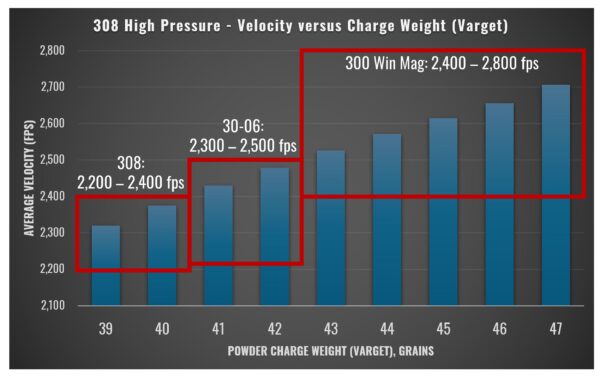
Accuracy significantly declined at 46.0 grains, but we never had a stiff bolt lift. Reaching 2,700 fps was absolutely unbelievable. All this came together with quality materials and good chamber geometry, cut with an Alpha Munitions reamer. Once again, DO NOT DO THIS AT HOME.
Some math: Nosler lists 10 powders/loads for 300WM 210 grain (average max load = 2807.8 fps), and 10 powders/loads for 300WM 220 grain (average max load = 2700.3 fps). The middle ground (215gr equivalent) between these is 2754.05 fps. We achieved 2706.3 here with 308, so that’s 98.2% of what Nosler lists as equivalent 300WM max performance for a 215 grain bullet.
With over 2,700 fps, we hit 98.2% of 300 Win Mag Max data from Nosler. WOW.
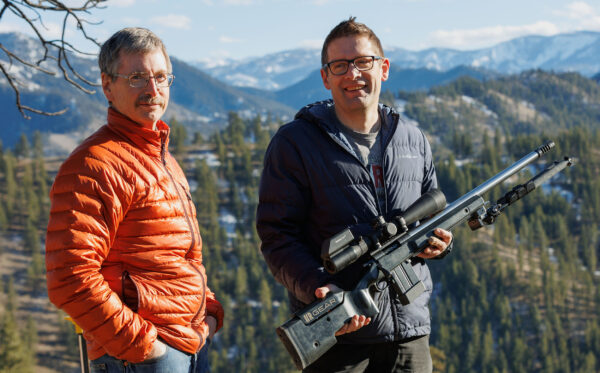
I had guidance from Alpha Munitions and Bruce Thom. Also keep in mind that increased pressure is something that may happen unintentionally due to environmental factors. A strong action with strong brass minimizes risk.
Get the Gear
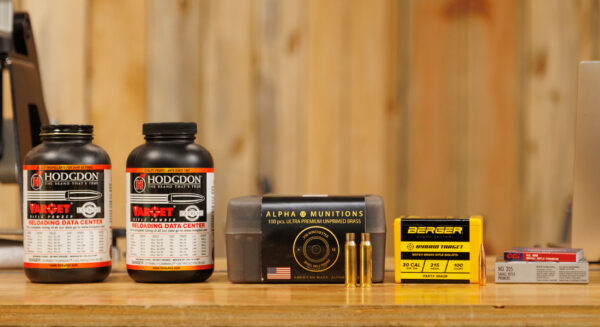
Alpha Munitions .308 Winchester Small Rifle Primer Brass
Berger .30 Cal 215 Grain Hybrid Target Bullets at Creedmoor Sports and Midsouth Shooters Supply
Hodgdon Varget at Midsouth Shooters Supply
Federal 205 Small Rifle Primers at Midsouth Shooters Supply
CCI No. 400 Small Rifle Primers at Midsouth Shooters Supply
Area 419 Zero Press at Midsouth Shooters Supply
Area 419 Loading Block at Midsouth Shooters Supply
Primal Rights Competition Primer Seater
Inline Fabrication Ultramount at Midsouth Shooters Supply
A&D FX-120i Precision Balance (CE Products)
Garmin Xero C1 Pro at Creedmoor Sports and Midsouth Shooters Supply
Don’t miss out on Ultimate Reloader updates, make sure you’re subscribed!
Thanks,
Gavin Gear

